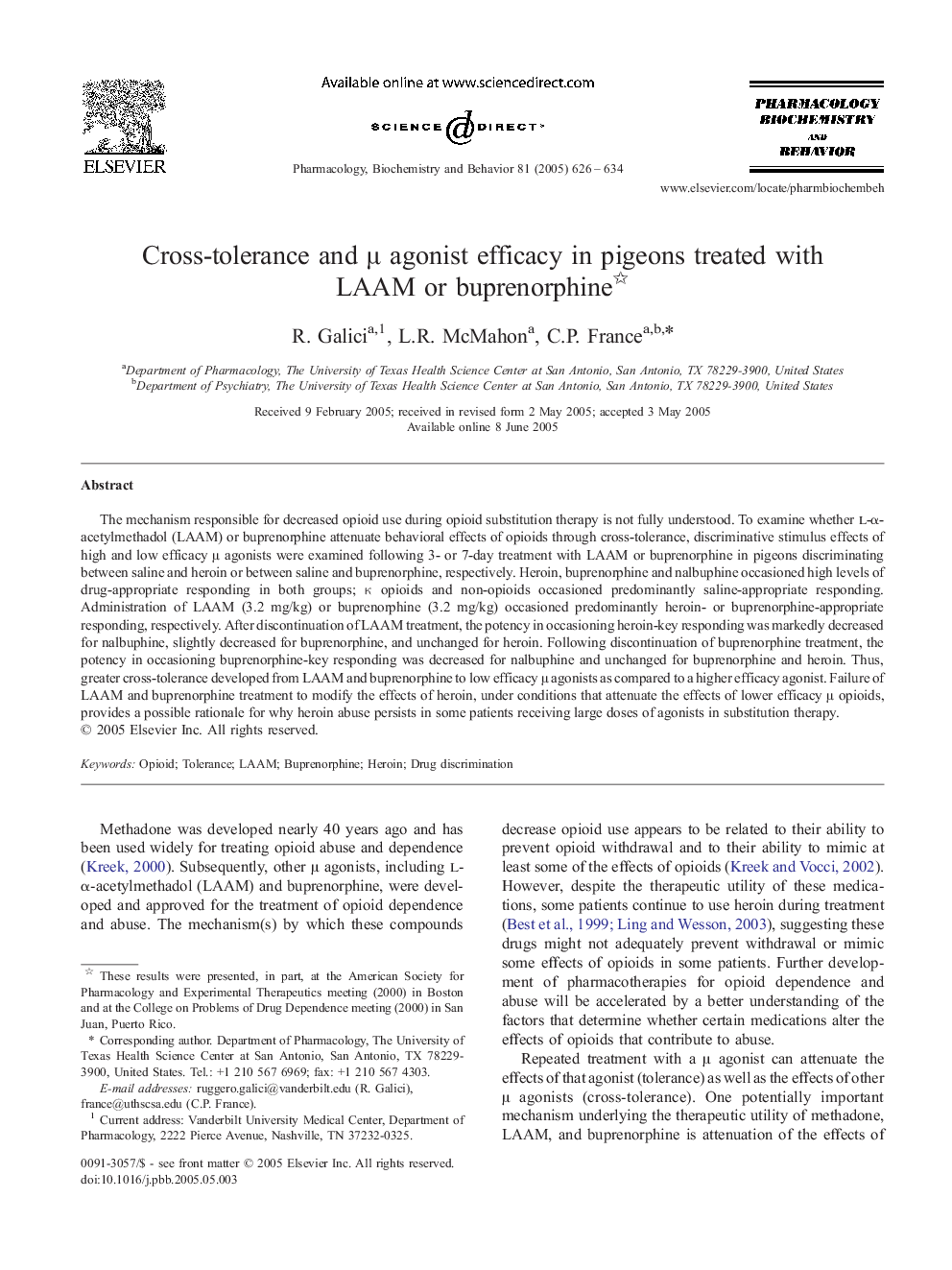| Article ID | Journal | Published Year | Pages | File Type |
|---|---|---|---|---|
| 10838852 | Pharmacology Biochemistry and Behavior | 2005 | 9 Pages |
Abstract
The mechanism responsible for decreased opioid use during opioid substitution therapy is not fully understood. To examine whether l-α-acetylmethadol (LAAM) or buprenorphine attenuate behavioral effects of opioids through cross-tolerance, discriminative stimulus effects of high and low efficacy μ agonists were examined following 3- or 7-day treatment with LAAM or buprenorphine in pigeons discriminating between saline and heroin or between saline and buprenorphine, respectively. Heroin, buprenorphine and nalbuphine occasioned high levels of drug-appropriate responding in both groups; κ opioids and non-opioids occasioned predominantly saline-appropriate responding. Administration of LAAM (3.2 mg/kg) or buprenorphine (3.2 mg/kg) occasioned predominantly heroin- or buprenorphine-appropriate responding, respectively. After discontinuation of LAAM treatment, the potency in occasioning heroin-key responding was markedly decreased for nalbuphine, slightly decreased for buprenorphine, and unchanged for heroin. Following discontinuation of buprenorphine treatment, the potency in occasioning buprenorphine-key responding was decreased for nalbuphine and unchanged for buprenorphine and heroin. Thus, greater cross-tolerance developed from LAAM and buprenorphine to low efficacy μ agonists as compared to a higher efficacy agonist. Failure of LAAM and buprenorphine treatment to modify the effects of heroin, under conditions that attenuate the effects of lower efficacy μ opioids, provides a possible rationale for why heroin abuse persists in some patients receiving large doses of agonists in substitution therapy.
Related Topics
Life Sciences
Biochemistry, Genetics and Molecular Biology
Biochemistry
Authors
R. Galici, L.R. McMahon, C.P. France,
